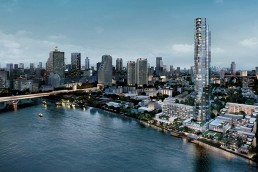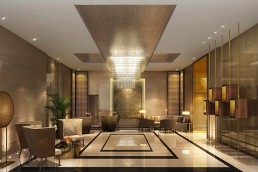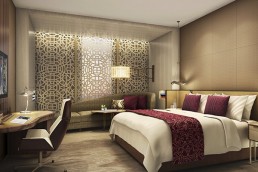Uniting seven historic buildings – all impeccably restored – the new European outpost from Four Seasons is a showcase of Spanish heritage, writes Agnish Ray.
Madrid has waited a long time for this hotel. Eight-and-a-half years, to be precise. Construction challenges, planning hurdles, changes in government and, not least, the coronavirus outbreak have left the city on tenterhooks in anticipation of what is one of Spain’s most significant hospitality openings in recent years.
Pandemic or no pandemic, Four Seasons Hotel Madrid would be held back no longer. The 200-key property opened last September, unveiling the result of a gargantuan development project. When OHL Desarrollos seized the enormous unused plot in 2012, it presented an opportunity like no other – in size, location and heritage – for Four Seasons to take on Spain for the first time. Now co-owned by Mohari Hospitality, the property hopes to be a game-changer for the capital, despite the unforeseen circumstances.
Aside from the hotel, the complex also incorporates 22 private residences and Galería Canalejas, a new shopping mall with over 40 outlets including Hermès, Cartier and Rolex. Together, they form Centro Canalejas, a €500 million project whose construction unifies what was previously seven different buildings, now covering a total of almost 8,000m2.
Banking remains the strongest legacy of these buildings; The Banco Español de Crédito, Banco Hispanoamericano and Grupo Santander are among the financial institutions to have occupied the site over the decades. The hotel’s lobby was the former credit bank’s operations hall, with reception and concierge staff now standing at the counters where bankers once served.
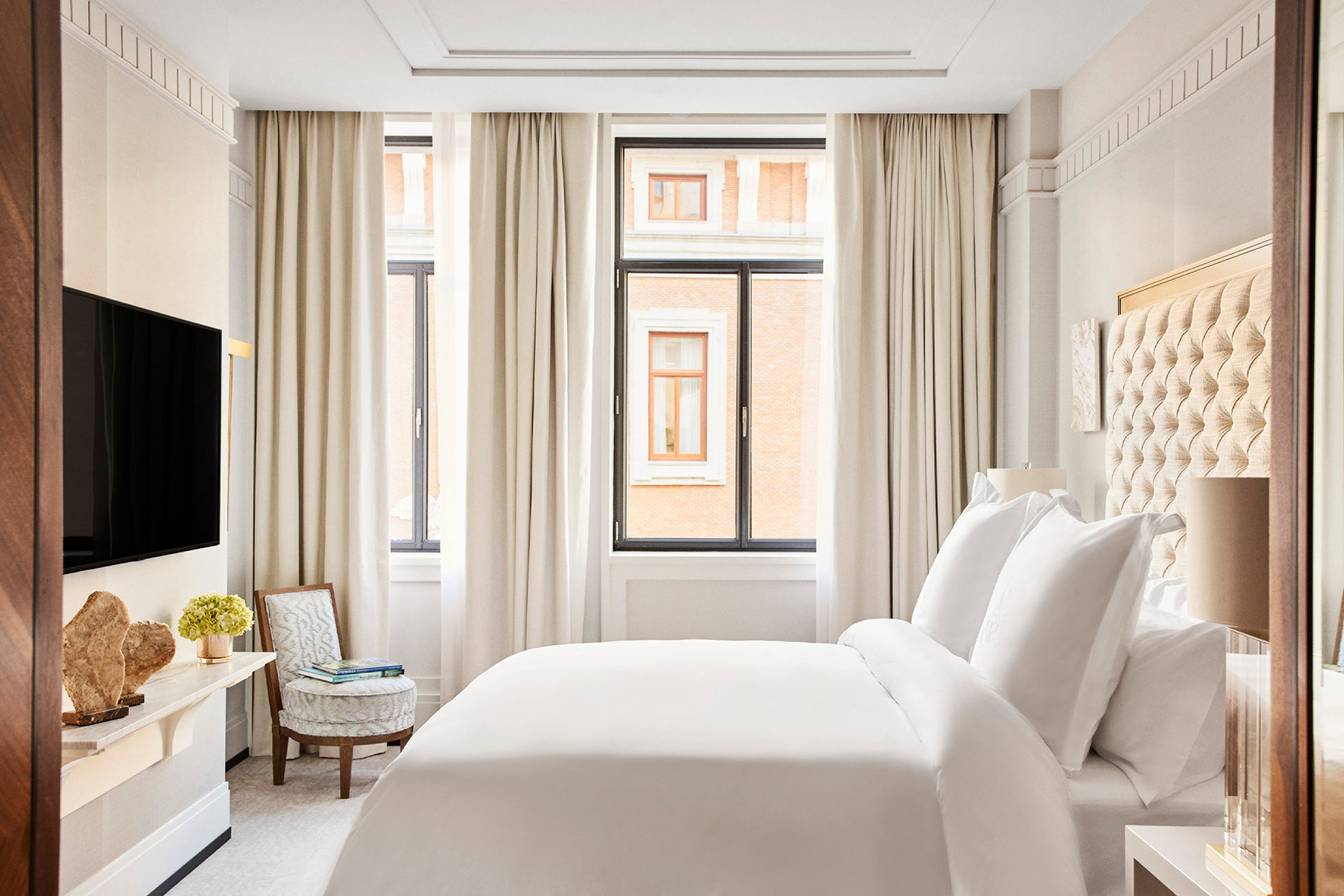
Tasked with transforming the historic site into its new incarnation was Spanish architect Carlos Lamela, whose studio is famed for its work on Terminal 4 of Madrid-Barajas Airport and The Santiago Bernabéu Stadium. Lamela’s hotel portfolio includes Meliá properties in Madrid and Torremolinos, as well as the extension of Hotel Bahía Real in Fuerteventura.
For this project however, the studio had to maintain most of the protected façade while hollowing out the entire block from the inside, breaking down the divisions between the seven buildings in order to reconstruct as one. They built both upwards and downwards, with a new 400-space car park underground taking two years alone to construct.
“We wanted each part to have the same language and to be read as one united project, rather than seven different ones,” says Ana Guasp, Project Lead for Estudio Lamela. “The mix of uses on top of one another – parking, retail, hotel and residences – was complicated because each use requires different installations and structures.”
Accompanied by the sound of flamenco guitars strumming, the sight of a majestic oval staircase greets the visitor upon entering the lobby. It might look like an original 19th century structure, but the stairway is in fact a contemporary creation by Steve Henry and Lindsay Noelting of Bamo, the San Francisco-based studio in charge of the hotel’s interior design, intended to add a sense of grandeur to what was previously a more functional, bureaucratic space.
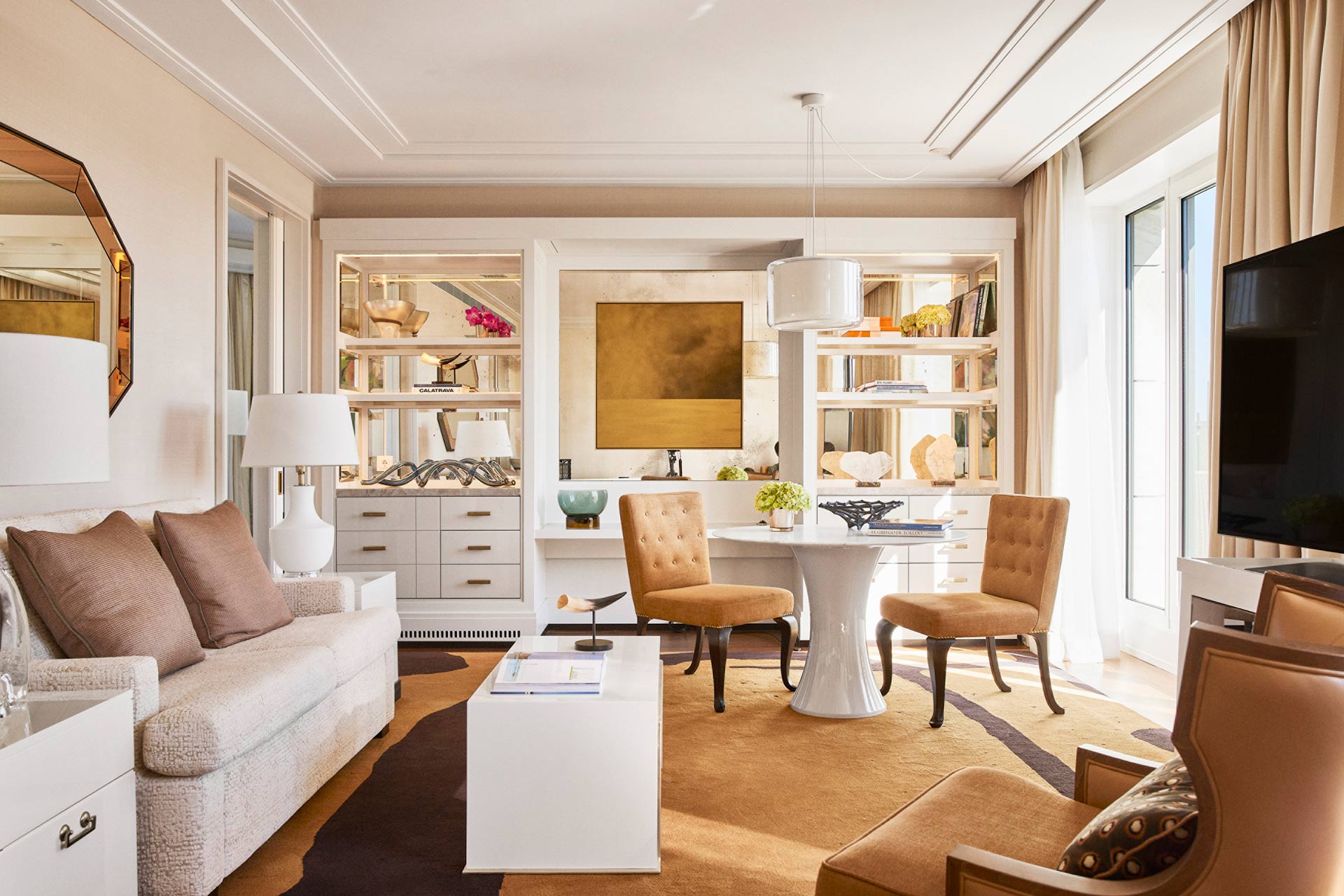
“There are a lot of angular aspects in the lobby, so we wanted the staircase to be sensuous and flowing as a contradiction,” explains Henry. “Its placement has a playfulness to it.”
Although the stairway itself is new, its golden banisters are from the original building. Approximately 4,000 such vintage pieces recovered from the space pre-demolition have been used around the new hotel, including the lobby’s green marble pillars and teller line countertops, the skylight overhead and the flooring, as well as various doors, door handles and decorative pieces.
“We had to find ways to make the green counters feel like they had a place inside a hotel lobby,” says Noelting. “We used them for our custom-made banquettes, creating little social areas; they really helped to define the space.”
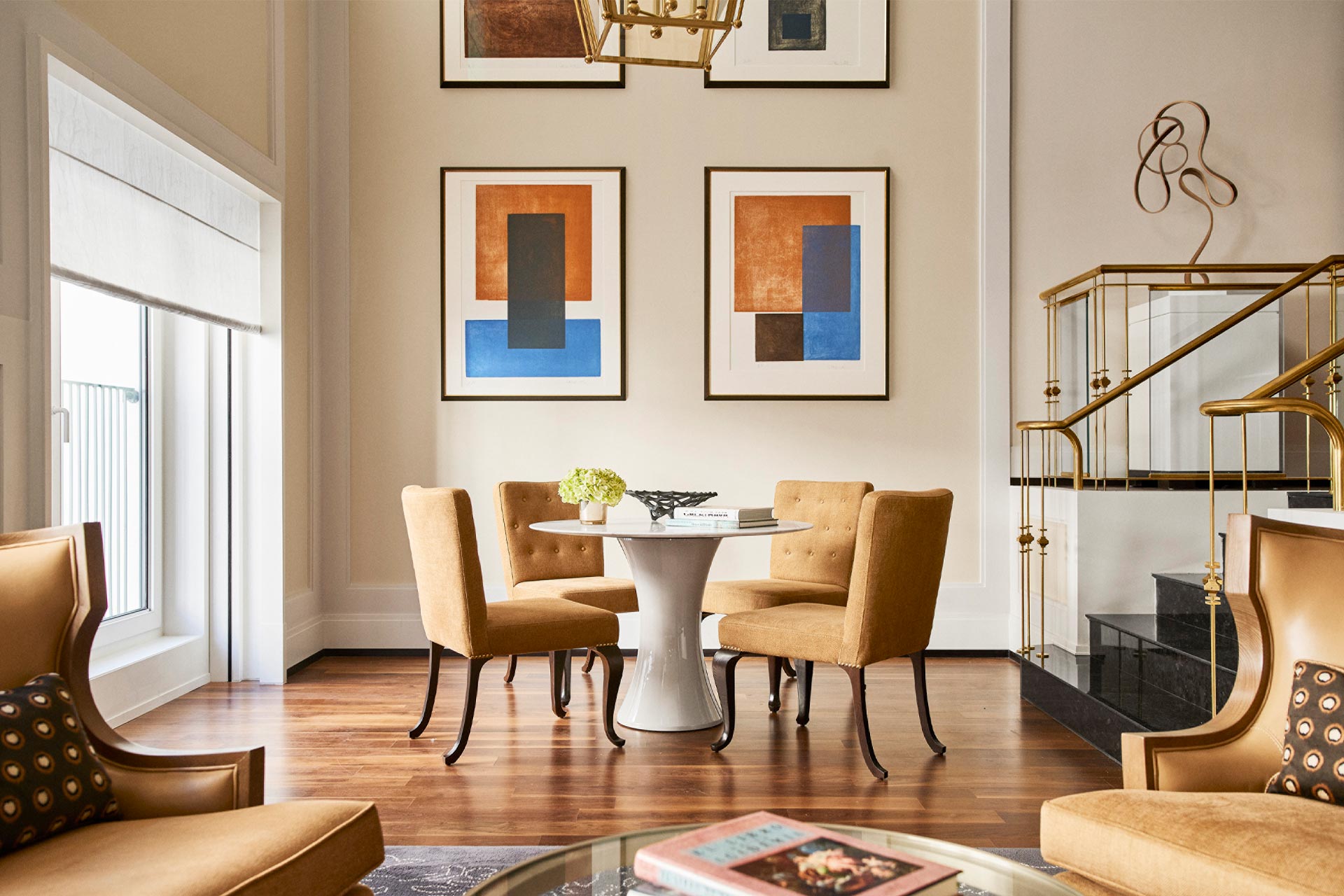
A walk upstairs leads past an art installation by Barcelona-based sculptor Eduardo Pérez-Cabrero featuring an array of small brass pieces strewn across the wall, resembling a starry night’s sky. This is one of the over 2,000 contemporary artworks displayed in the hotel and curated by Paloma Fernández Iriondo. Almost all are by emerging artists, creating an unusual juxtaposition of new against old.
Beneath the contemporary art and design touches, the property remains saturated in the buildings’ history, from the Art Deco elements of the façade to the original plaque engraved with the Banco Español de Crédito logo found in the fireplace of the Royal Suite – a one-bedroom, 400m2 apartment fit for, well, royalty.
The interiors are also scattered with glass accessories from Sklo’s Object collection, as well as the fertile, natural imagery synonymous with the Four Seasons brand. Green and purple orchids sprout abundantly from tall black vases in the lobby, while petal-shaped metal sculptures sit as lighting features on the walls. All the guestrooms also display floral-patterned plaster reliefs produced at the city’s San Fernando Royal Academy of Fine Arts, located opposite the hotel and home to 1,400 paintings, 600 sculptures and 15,000 drawings.
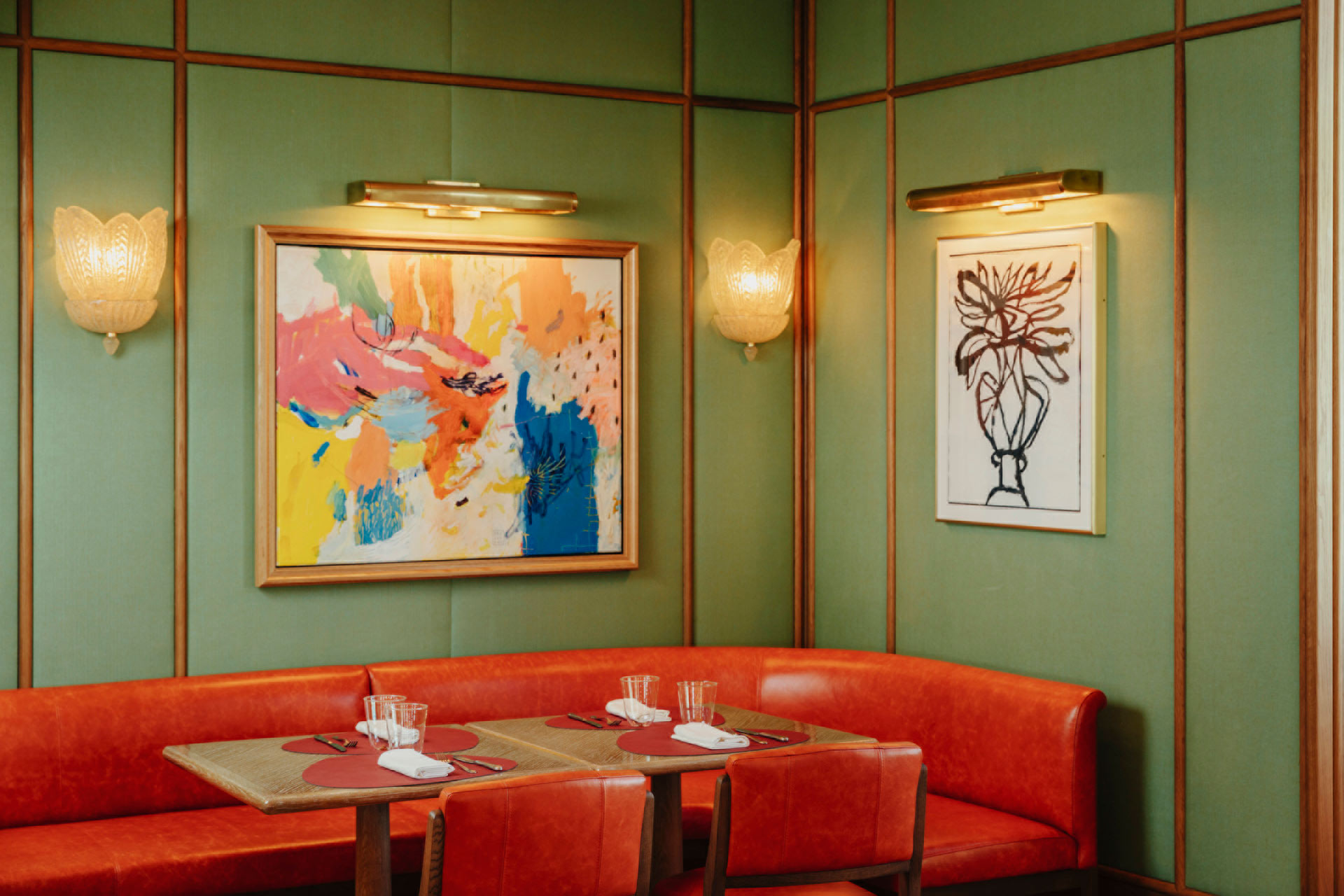
This opening has long been hailed as a major step in solidifying Madrid’s position as a luxury European destination. However, it came during one the most challenging years imaginable for large-scale tourism. As the city fluctuated in and out of localised lockdowns, the hotel had to focus on appealing as much to domestic clientele as to international visitors.
Its F&B offer has played a crucial role in doing so. The lobby space, named El Patio, is a place to enjoy refreshments whether staying overnight or not. The rooftop restaurant, designed by Martin Brudnizki Design Studio, is the latest venture from Michelin-starred chef Dani García, whose name alone is enough to draw in Madrid’s dining aficionados. Here, a patterned olive-green cloth lines the walls and is accompanied by bold splashes of colour and antique fittings. AvroKO meanwhile has crafted the Asian-Spanish fusion lounge bar, Isa, due to open very soon.
Before the pandemic hit, the hotel’s unveiling was planned during the folkloric San Isidro festivities, a centuries-old annual milestone in the city’s calendar. So, the spirit of aligning Four Seasons Madrid with the heart and soul of the capital in fact preceded the ‘new normal’. Now, during times of restricted international travel, it seems especially fitting for an establishment so steeped in the history of its location to be catering to the local population.
EXPRESS CHECK-OUT
Owner: Mohari Hospitality, OHL Desarrollos
Developer: OHL Desarrollos
Operator: Four Seasons Hotels & Resorts
Architecture: Estudio Lamela
Interior Design: Bamo, BG Architecture, Martin Brudnizki (F&B), AvroKO (F&B)
Art Consultant: Paloma Fernandez Iriondo
www.fourseasons.com
CREDITS
Words: Agnish Ray
Photography: Courtesy of Four Seasons (unless otherwise stated)
Related Posts
15 September 2015
Denniston to design Four Seasons hotel
1 June 2015
Tihany to Design Four Seasons Dubai
12 May 2015
